3D Printed Art: What is it and examples of it
Three-dimensional art dates back to the Paleolithic Era and has evolved throughout the centuries by adapting to different innovations. Over the years, technology and creativity have worked hand-in-hand to develop breakthroughs in visual arts.
Modern technology has given birth to 3D printed art in the 1980s but has only gained popularity in the 2000s. This breakthrough is widespread in different fields and specializations; though, only a few know how it is done. To give you a clear picture, you can liken 3D printing to stacking layers of ingredients when making a sandwich.
What makes this technology so easy and beneficial to many industries is that it’s just a matter of bringing a particular concept designed on computers into the physical world, which is why it is no surprise that many embrace it with open arms.
Pushing the Boundaries of Creativity
3D printing’s main asset is transcending barriers; hence, it is no wonder that there are many things you can do with this digital technology for personal and professional purposes alike. All you have to do is to think out of the box and push beyond your limitations. You will be amazed at what you can do in printing on 3D.
Here’s how 3D printing provide new opportunities by pushing the boundaries of creativity.
1. Turning Impossible to Possible
![]()
Creativity is one of the numerous things that keep the world constantly evolving. In the manufacturing world alone, 3D Printing made a huge contribution since there is a new level of flexibility in product designing and prototyping. Designs considered impossible years ago are now possible thanks to this digital art.
The jeweler market is one of the many industries taking advantage of 3D printing by creating particular pieces to the clients’ specifications. For instance, jewelry designers in the past are partial to design pieces completed through hand carving. Today, 3D technology can capture complex designs, allowing artists to have more freedom when making 3D printed artworks.
One of the most popular examples of these highly customized artworks is the “Sentient Veil” by Phillip Beesley, composed of the digitally fabricated cellular textile lining. You can see it floating over the gallery ceiling of the Isabella Stuart Gardner Museum in Boston.
2. Eliminating Issues on Scales and Sizes
Executing designs has been a great challenge for artists because of scales and sizes. But that was before the emergence of 3D printing. Today, scaling art designs is no longer an obstacle since 3D printing allows designers to produce art pieces according to preferred sizes without compromising the final output.
Every building is considered a prototype in construction because each is uniquely designed based on location, functionality, materials, and even budget. Through 3D printing, architects and engineers can provide small-scale models of proposed structures before constructing them to their actual size. In addition, they can create intricate designs faster and easier on larger or smaller scales.
3. Rapid Prototyping and Mass Production
Traditional prototyping is time- and cost-consuming since creating a single model would take weeks to finish. Even tiny changes would add a few weeks to the process. In addition, a lot of companies would often outsource this process due to the unavailability of resources.
Thanks to 3D printing, manufacturers can create a prototype within hours and complete modifications in a shorter time frame. Furthermore, companies can be more flexible with their materials since most 3D printers are compatible with a wide range of raw materials.
4. Re-creating Architecture Wonders and Famous Arts
Digital technologies, particularly 3D scanning and printing, are not only limited to designs and creations. It has also revolutionized the process of art restoration and re-creation. Restorers have established an entirely new set of standards in the restoration of artifacts.
Precious works of art get broken or destroyed throughout history. Before, such disappearance would mean getting lost in history forever. Today, professionals can re-create architectural wonders to their original beauty by accurately reconstructing missing elements, creating prototypes for quality control, and pre-categorizing before final restoration. This modern technique is similarly used for restoring other famous and historical art pieces.
After many attempts from various artists and historians throughout the years, 3D technology successfully replicated the 43-feet-tall statue of Zeus in Olympia. The original artifact, made of wood and featured fold and ivory panel, was destroyed in a fire sometime in the 5th Century AD.
What are the Benefits of 3D Printed Art Projects?
3D Printing has greatly impacted various fields, which is why more and more companies and organizations are embracing this process. Here are the benefits of 3D printing in some industries:
1. Manufacturing Industry

Cost and Time Efficient
Traditional prototyping can be expensive because you need to consider the cost of materials and labor. The method involves several types of machinery operated by experts. It also requires several steps, which can be time-consuming.
Since 3D printing is a single-step process, it saves time and cost associated with different equipment. In addition, it only utilizes the materials needed for the specific task, therefore leaving little to no wastage.
Easier Product Testing
A three-dimensional prototype makes physical demonstration to potential customers and investors possible. It allows you to test a tangible trial product for its usability and possible flaws compared to product samples shown on screens.
Product Quality and Consistency
The methods in traditional manufacturing may result in poor designs and quality. The use of 3D printing allows manufacturers to produce parts in succession and assemble parts step-by-step. By doing so, you guarantee the quality of the final products.
2. Medical Field
Custom-Made Prosthetics
Before, it was normal for amputees to wait for some time to get their prosthetics. 3D printing, however, has sped up the process for them. In addition, it allows patients to design a prosthetic that corresponds according to their needs.
An 83-year old patient with chronic bone infection was the first patient successfully implanted with a titanium mandibular prosthesis. A squad of researchers at the BIOMED Research Institute of Belgium, who also manufacture the said prosthetic device, performed the procedure.
Organ Replication
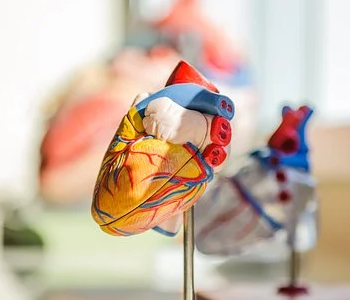
Surgeons can practice using a 3D printed patient-specific organ before performing complicated procedures. As a result, they can speed up operations and minimize patient trauma.
Students studying medicine also use organ replication. 3D printed humans now replace cadavers are now in many schools. The advantage of using them is that newer technology can stimulate the body according to specific cases medical students need to know about; therefore, making learning various health conditions and treating them more effective.
Bioprinting
Bioprinting is practically similar to 3D printing, only that it uses living cells and tissues as raw material. Objects printed, such as body parts or human organs, are used for medical research since they can mimic the real ones on a miniature scale.
Several companies that focus on medical laboratory and research have experimented with this technology for disease modeling and drug development for certain ailments. They also use it to cover the shortage of donor availability in human organ transplants.
There are several reports of successful bioprinting of cell tissues from bones, cartilages, skins, and heart valves. However, they are only limited to the laboratory level and would still go a long way before being used for clinical application.
3D Printing of Medical Instruments and Gears
Over the year, there has been a shortage of medical instruments and protective gear. To address this, many health care centers have resolved to produce their supplies through 3D printing.
3. Education and Child Development
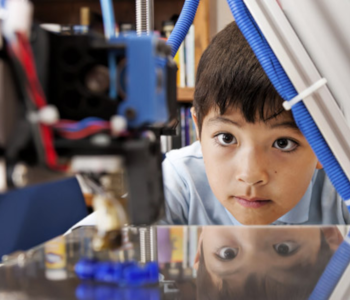
“Hands-On” Learning
Through 3D printing, many tested theories and turned them into reality, allowing learners to experience what they are learning personally. Having tangible objects available gives them a better grasp of the subject matter and helps retain information better.
Creates Excitement and Encourages Participation
Children get easily bored in conventional classrooms. Adding 3D printing in the school environment brings a “wow factor” and encourages reluctant students to participate. It allows teachers and students to better interact during lessons through conceptualizing, designing, and executing projects together.
Mathematical Models
Mathematical concepts are essential since they represent how things work. Today, professors can help students visualize and understand complicated mathematical concepts by bringing them to life through 3D-printed art.
Even when drawn on paper, complex math is still hard to grasp without properly visualizing them. However, with the aid of 3D printed objects, you can hold them and compare them with other models. You can see these mathematical concepts and proofs as real-life objects.
3D printing is also very helpful for learning chemistry and biology. It gives you accurate large-scaled models of molecules and cells to study.
4. Anthropology and Paleontology
Studying historical remains can be tricky and sensitive. They tend to be fragile, so researchers would have to resort to examining replicas to avoid causing possible damage to the original ones. Like other traditional methods, replicating historic artifacts and fossils can be tedious and time-consuming. Thanks to 3D printing and scanning, they can now be quickly replaced.
With 3D printing, cloning historical finds is possible without ever having to touch them. These copies may be reproduced repeatedly and in various sizes, which are perfect for research and teaching purposes.
5. Archeology
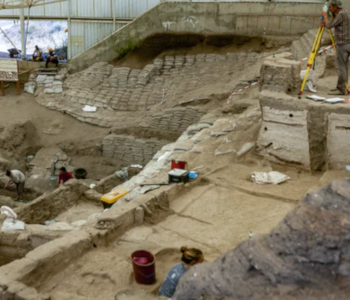
3D printing has been helping archeologists learn more about ancient history by re-creating architectural wonders and other historical sites. In addition, the technology also allows for the restoration of damaged landmarks to preserve human culture.
6. Film Industry
3D printing is so convenient these days that even Hollywood has caught onto the technology. Most modern movies rely on computer-generated images (CGI) to create amazing characters and sceneries. It is not a surprise that the industry has moved towards the actual printing of 3D models as props and accessories.
This technology is valuable when it comes to creating concept mock-ups for movies, as well. Production can easily make tweaks and changes, saving time and cost. Remember Aragog from the Harry Potter movie series? He’s a perfect example of a mock-up concept created from 3D printing.
Furthermore, Hollywood has also used 3D printing to create sounds. How? Jurassic Park 3 is a perfect example of how sound is made possible through 3D printing. In the movie, the assistant of Dr. Grant recreated the larynx of a Velociraptor using a 3D printer. He then proceeded to blow onto it to create what everyone assumes as the sound Velociraptors make.
Interesting Projects You Can Do With Your 3D Printer
Ever since 3D printing has taken the world by storm, many have invested in 3D printers to create different projects that were once impossible to make at home. In addition, these machines now come cheaper in the market, thus making them appealing to have for many. If you already have one of your own, here are some practical ideas for your next 3D printed art project:
Planters and Mini Greenhouses
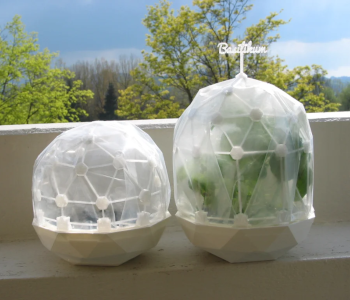
This pandemic has transformed many quarantined individuals into plant moms and dads. Aside from giving your plant babies a comfortable place to grow, these tiny pots are perfect 3D print projects for beginners since designing one is as easy as ABC.
Wire or Cable Organizer
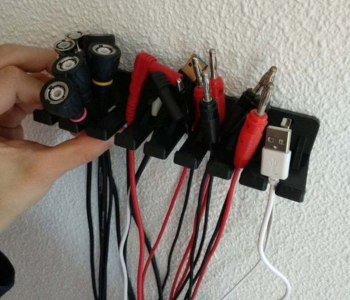
Many are now working from home, and one of the things that would most likely aggravate you is the cords of your office devices. Make your work life less annoying by making these cool cable organizers for your home office.
Helmet Hanger

Motorcycles are not only cheap but also budget-friendly vehicles for transportation. Helmets, however, are bulky and can consume much space on your coat racks. It might not seem practical, but having a designated hanger for your safety gear will not only give you more room for your wardrobe but will make your surroundings look organized.
Tangram Tiles

Can you still remember this classic puzzle game? Give your brain a little workout with these lovable tangram tiles and enjoy them with family and friends.
Touch-Free Tool
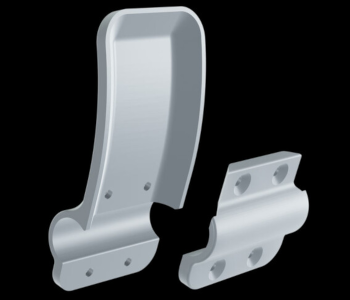
Before 2020, you would think that this tool was invented for germophobes; but it isn’t the case today. Touch-free tools are practical since they help us take extra precautions in limiting contact with commonly touched surfaces.
Keepsakes and Memorabilia
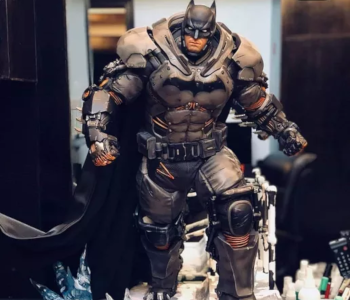
One interesting and personal project you can make with your 3D printer is to turn your child’s drawing into a real-life souvenir. It is an excellent way to keep your child’s artwork for a longer time.
Another fun way to use 3D printers is to create miniatures from pop culture, which is a new way of making collectibles. You can develop minis from any of your favorite TV shows, comic books, and anything pop culture-related.
Final Thoughts
The value of 3D printing in practically all aspects of your life is undeniable. However, there is still a long-going battle that technology is killing humans’ creativity streak. Others would suggest that it makes things too easy for individuals to copy what already exists. They, however, have not considered that it can encourage inventiveness.
3D printing is a high-tech breakthrough that brought so much change in our lives. You can now make things that were not previously possible and learn things on a different level. To make things even more exciting, 3D printers are now within the financial grasp of many people.
The invention of 3D printers is one proof that technology and creativity work together for your betterment. It has encouraged individuals to create what they imagine and helped them advance while preserving their culture.





